When I tried to find information on internet on how to get from Gdansk (Poland) to Kaliningrad (Russia), the main comments referred to the fact that it was completely uncertain how long the journey would take, whether one went by train or by bus. I didn’t even manage to find any train, hardly finding a coach. There are actually several companies that link these two towns in the two countries, but some of the operators do not cover this route every day and that was a huge problem for me at first. Luckily, I succeeded in finding a Russian operator who drove every day, three times a day. I went to their site, but there was nothing in English. Well, although I don’t speak Russian, it was not too big a problem, for everything was obviously in Cyrillic (which is my first script anyway), so I could manage. Where I didn’t understand the question, while trying to buy the ticket, I used the help of Google translator and so I finished what I wanted. On the other hand, I found it interesting that when I had to write the country I was coming from, the system did not recognize Serbia. But then I remembered what it was. Yes, in the case of this operator, we were still under Yugoslavia.
Still, it was important that the ticket I had bought functioned quite fine. It even stated 3.5 hours as the length of journey, but the lady who was sitting next to me told me this was the ideal timing. Apparently, it usually takes five hours, on account of the border control. On the other hand, I have to say that it really took us quite a lot of time to get out of Gdansk in the first place because of the horrible traffic jam. We also had to drive very slowly on a good section of the road towards Elblag, since the proper motorway was under construction and the pressure on the existing roads was too much. So, it was not all a problem of the border crossing, but it is important that one prepares oneself and be patient. For comparison sake, it took us almost two hours to get to Elblag (around 60 km). Of course, in a couple of years, when the motorway gets finished, all of this will be significantly faster and more comfortable.
On the Russian border we all had to get out of the coach and go to a counter where they checked our passports. With my Serbian passport I don’t need a visa, but the officer was quite confused when she saw it and she had to check something by phone. I guess there are not many of my compatriots who cross the border at this place, so the woman had to make sure whether I needed a visa or not. It all went well.
I arrived in Kaliningrad in the evening, but I easily found my way to the flat I had rented for the occasion. The flat was exceptionally nice and beautifully decorated. I went to bed relatively early, since I had only the following day and a half for the visit to Kaliningrad and I needed to be rested.
One of the main reasons why I wanted to visit Kaliningrad is the very position of this town and the region. After WWII this territory belonged to the Soviet Union and later to Russia, and was renamed from Konigsberg (Königsberg) to its present name after a famous Russian revolutionary and politician Mikhail Kalinin. But, Kaliningrad is actually well-known for its most famous resident – philosopher Immanuel Kant.
So, Kaliningrad is practically a Russian exclave, territorially separated from the rest of the country and it borders Poland and Lithuania. It was precisely this specific position which I, as a traveller, found particularly attractive. In addition, I had never been in Russia (if the base on Antarctica is not considered a Russian territory – see: https://www.svudapodji.com/en/chile-5/), so I thought it would be quite proper to start from its most western territory with an idea to go eventually all the way to Vladivostok which has always seemed to me to be the ultimate end of the world.
The morning after my arrival, the weather was constantly changing from drizzle to dry and back, but I went for a walk around the town anyway in order to get to know the distribution of some sights and the proportions, and also with a goal to reach the centre and the tourist office. While walking in this way, I also came across some places I had not necessarily planned to visit.
Generally speaking, in several places in the town there are monuments which in one way or another celebrate the Great War, as Russians, and previously Soviets, call the Second World War. Somebody may find this exaggerated, but taking into account the number of casualties, both military and civilian, which the Soviet Union had (it is estimated at over 20 million and according to the latest assessments even at over 26 million people), which is significantly more than the total figure for Germans who were scattered on different fronts and all over the place (the estimates for the total number of killed German soldiers and civilians go maximally to around 7.5 million people), it is no wonder that WWII has stayed in such a prominent and deep collective memory of the entire Russian nation.
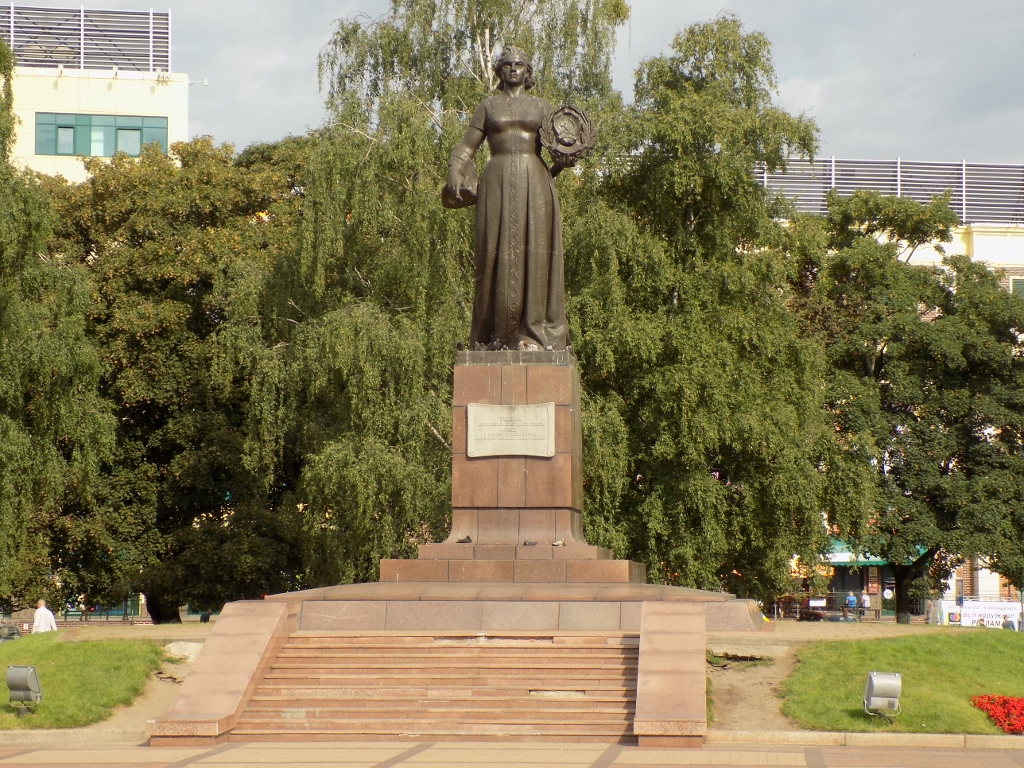 Monument to Mother Russia
Monument to Mother Russia
So, I thus reached the large central Victory Square, where there is a high Triumphal Column which marks and celebrates the Great War. Behind it, on an elevation, there is the Cathedral of Christ the Saviour with recognizable domes of the shape typical for Russian churches.
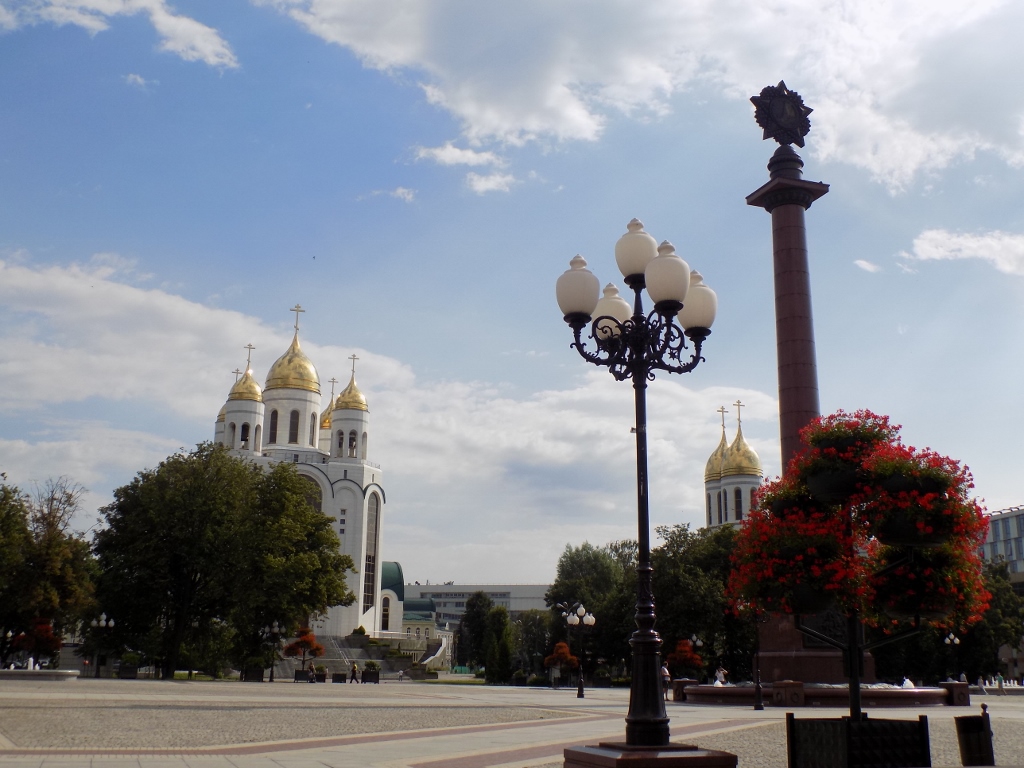 Victory Square – Cathedral of Christ the Saviour and the Triumphal Column
Victory Square – Cathedral of Christ the Saviour and the Triumphal Column
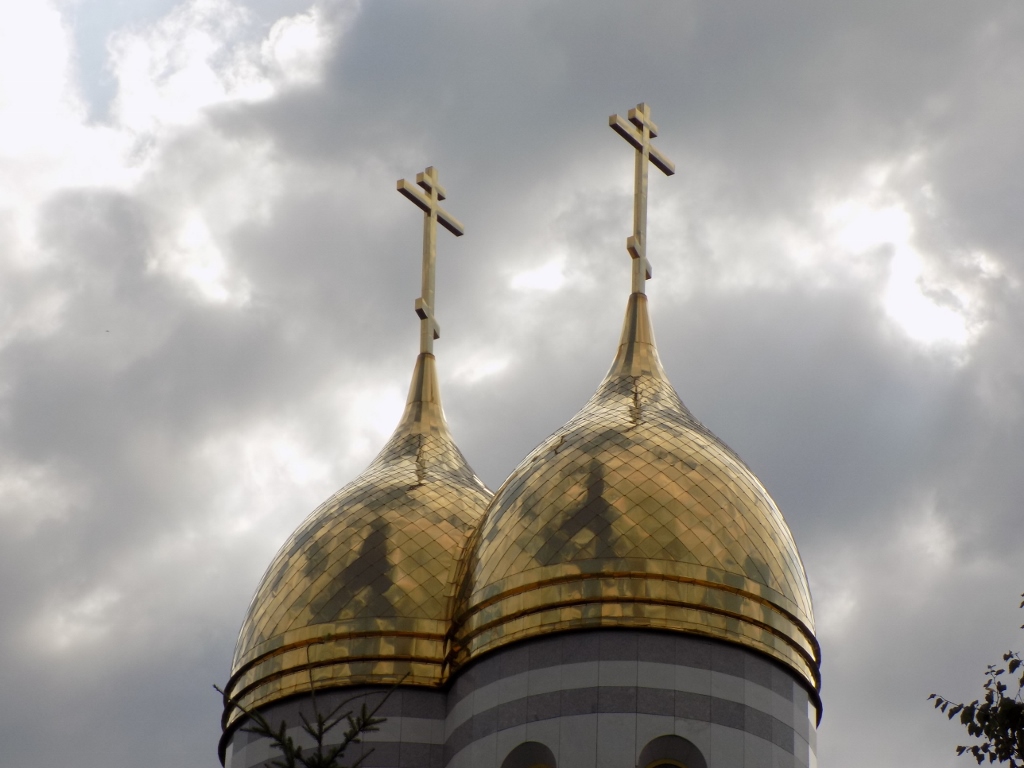 Cathedral of Christ the Saviour, a detail
Cathedral of Christ the Saviour, a detail
The cathedral was consecrated in 2005 and it is situated on top of a large stairway, while the entrance that was open this time is located on the side of the church. When I went to visit it, there were still scaffolds in some parts of it and the works on interior decoration were still going on.
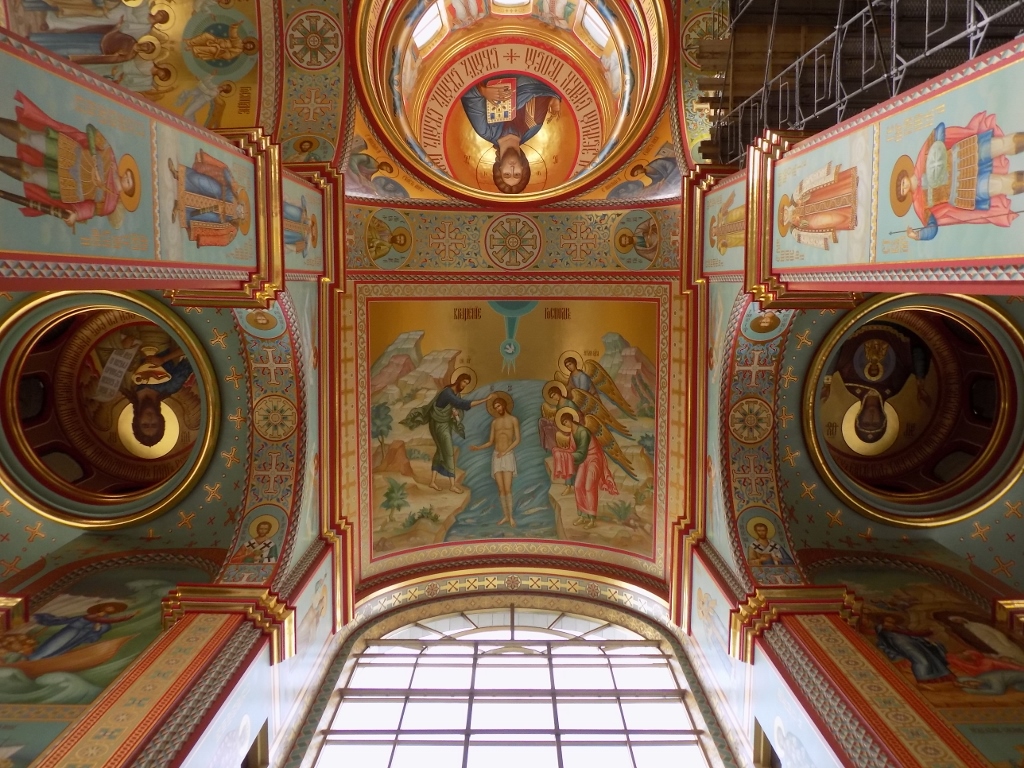 Cathedral of Christ the Saviour, interior decoration
Cathedral of Christ the Saviour, interior decoration
Finding myself inside, I wanted to light a few votive candles, but I got puzzled as I couldn’t see where to light them for the departed, so I asked the girl who was selling the candles. There I learned a difference between the Russian and the Serbian Orthodox Churches. In Serbia, votive candles for the living are lit on the upper trays and for the departed on the lower trays, but in the Russian version, there is a place in front of a Crucifix, also “up,” but it is precisely this crucifix that makes it different from other candle holders and it is used for the departed. In the case of the other candle holders, for the living, there are no crucifixes there.
After this brief spiritual experience, I continued with my walk to the Drama Theatre in which, on the left-hand side of the building, there is a tourist office where I wanted to get a map. They were very kind there and gave me also a couple of other tourist brochures.
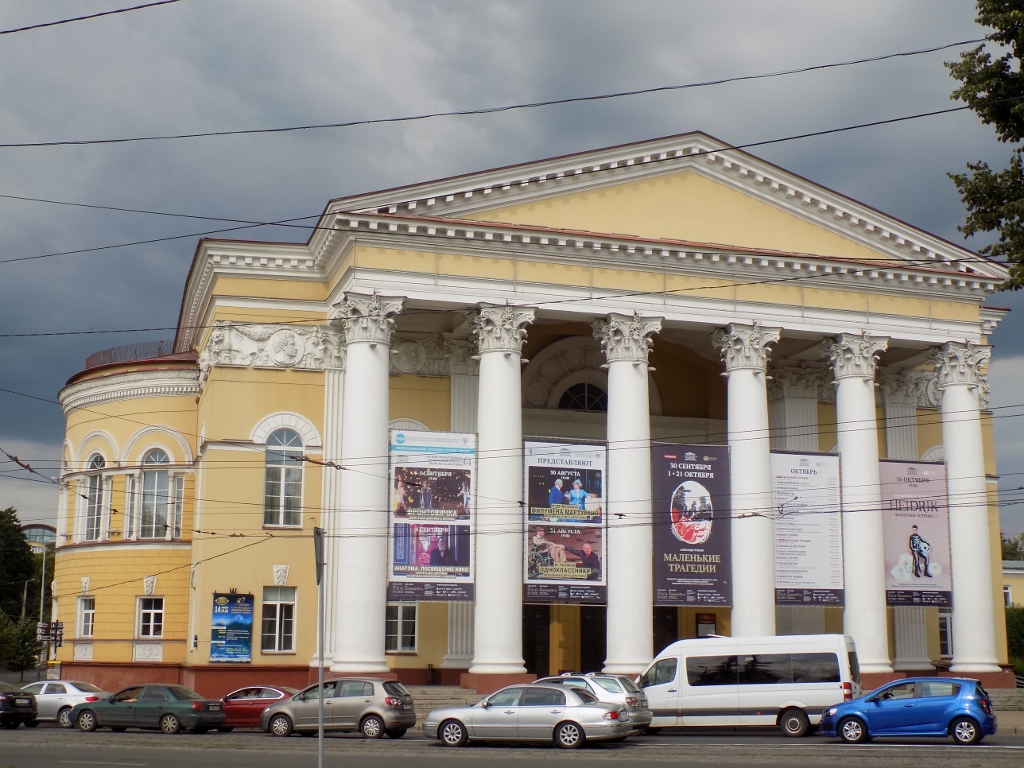 Drama Theatre in Kaliningrad
Drama Theatre in Kaliningrad
In the park in front of the theatre, there is a monument to the German poet Schiller. I read somewhere that during the battle in 1945, a Soviet soldier put a large sign on the monument saying: “Watch out, this is a great poet!” and the monument miraculously survived the heavy fighting. A nice and poetic story!
Then I walked to the Upper Pond, visiting on my way the Wrangel Tower which appeared rather shabby. This tower is one of the remains of the former city walls that surrounded Konigsberg. Literally on the opposite side of the Upper Pond from it, there is the Dohna Tower which houses the Amber Museum. In addition to these towers, there are also seven gates that have survived to date and that surround the central part of the town, and I managed to see a couple of them.
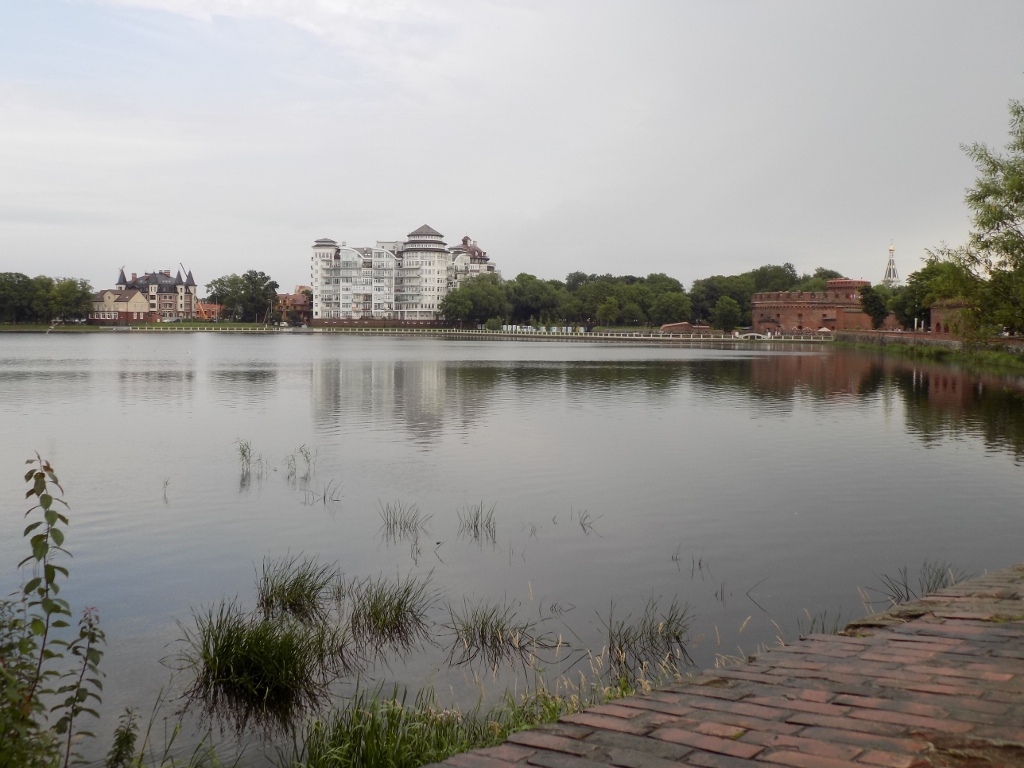 Upper Pond, with the Dohna Tower to the right in which there is the Amber Museum
Upper Pond, with the Dohna Tower to the right in which there is the Amber Museum
I took the opportunity to go and visit the Amber Museum which is situated right next to the Rossgarten Gate. I was completely impressed when together with the audio guide I received a wet tissue as well, so I could freshly wipe, disinfect and get the device ready for personal use, although it was going only as far as my ear.
By the way, amber is considered a semi-precious stone, while it is not a stone at all, but rather a fossilized tree resin. It is used for the production of jewellery, as well as for making artistic objects, from plates and jewellery boxes, to ship models and large pictures. Perhaps the most famous artistic use of amber was originally in the Amber Room that was situated in the Catherine Palace near St. Petersburg. During WWII, Germans dismantled this room and they brought its parts precisely here, to Konigsberg, where any trace of it was lost in 1945. In 2003, after 24 years filled with great efforts and hard work of Russian and German experts, a new Amber Room was made and assembled at the Catherine Palace, while here in Kaliningrad it is possible to see some other exhibits.
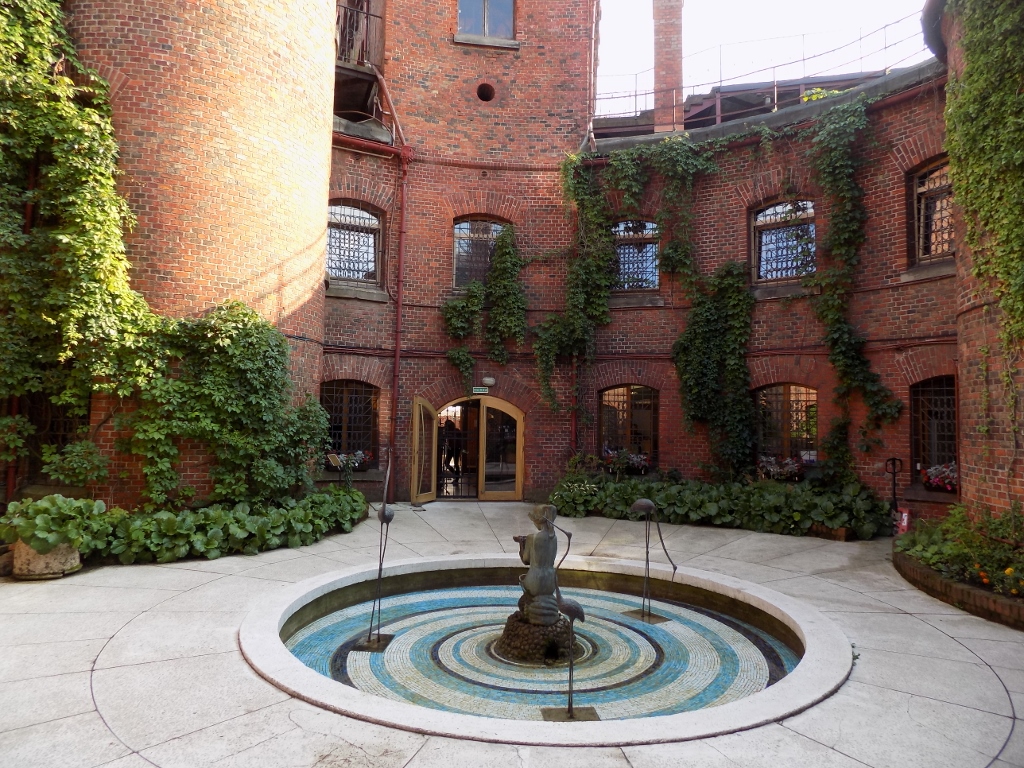 Amber Museum, inner yard and parts of the Dohna Tower
Amber Museum, inner yard and parts of the Dohna Tower
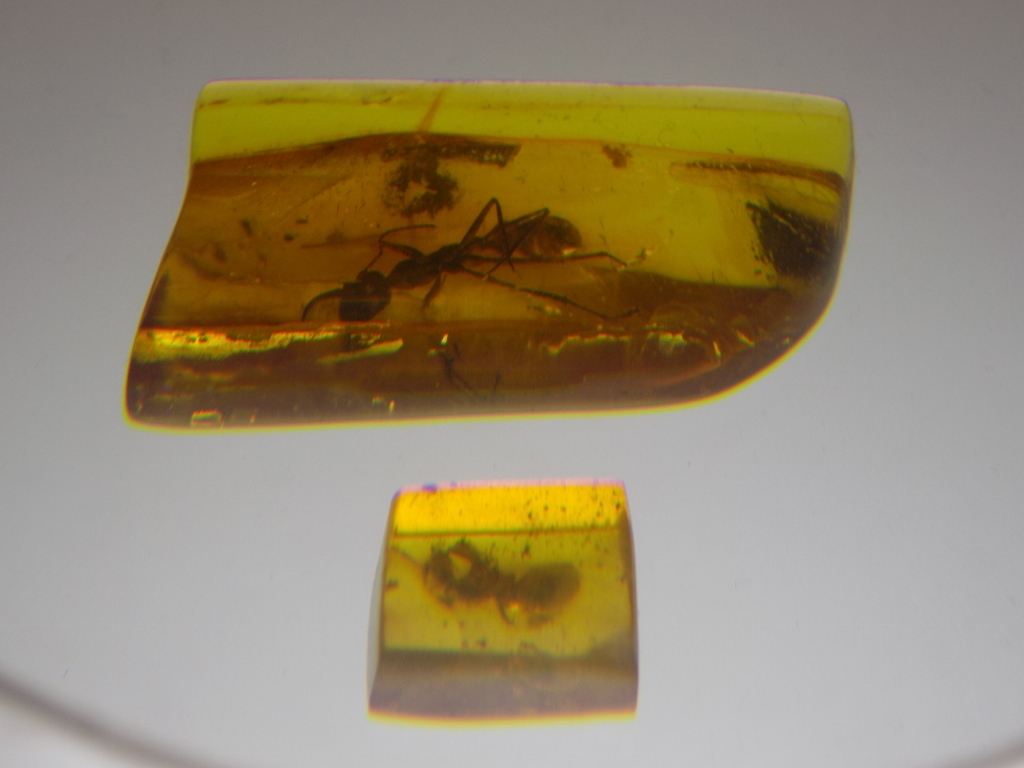 Amber Museum, one of the exhibits – an ant forever trapped in amber
Amber Museum, one of the exhibits – an ant forever trapped in amber
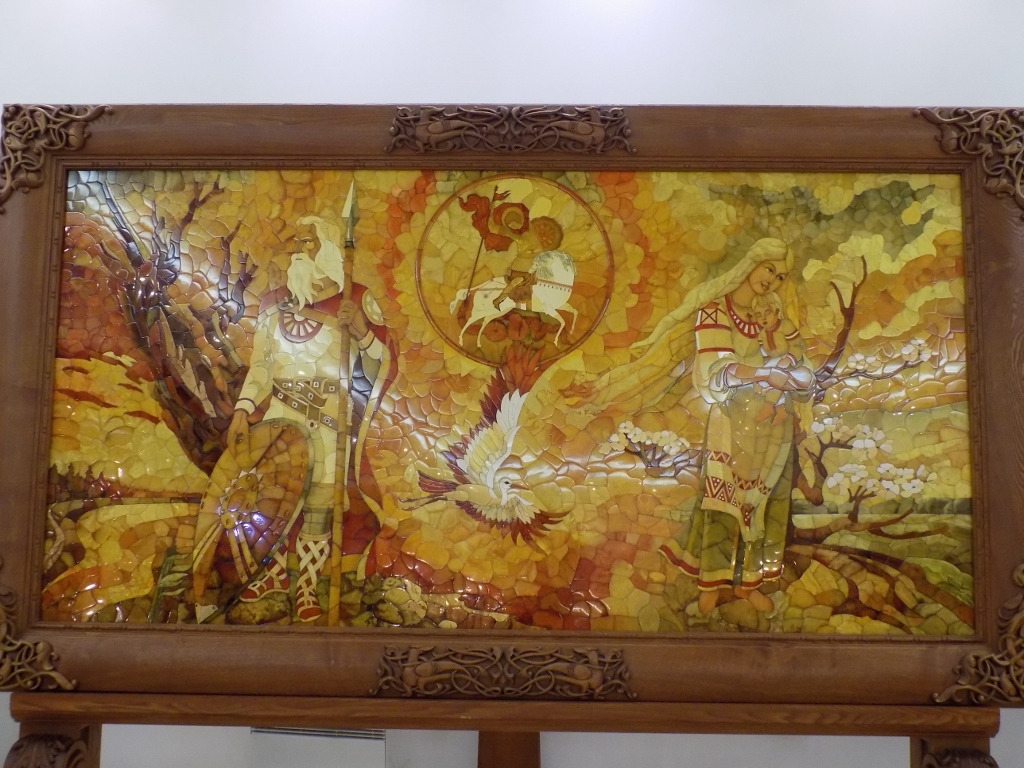 Amber Museum, a picture made of different colour amber pieces
Amber Museum, a picture made of different colour amber pieces
Then I cut partially beside the Lower Pond in order to reach an island on the Pregolya river, passing along the way through a park that has a memorial dedicated to Baltic sailors.
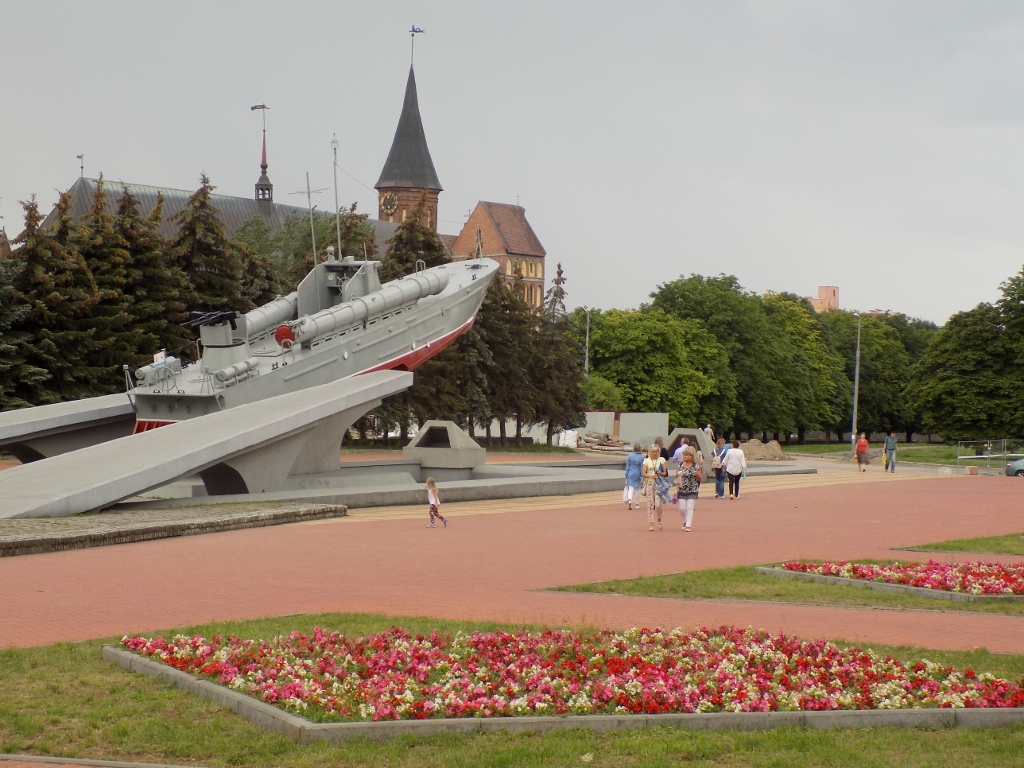 Memorial to Baltic sailors, with the Konigsberg Cathedral in the background
Memorial to Baltic sailors, with the Konigsberg Cathedral in the background
One of the main reasons why I wanted to come here was precisely to get to the Cathedral on the outer side of which (the north-east corner) there is a mausoleum to the great philosopher Immanuel Kant. I don’t know what at the age of 17 when I first learned about Kant in my philosophy classes I could understand from what he had written, but I do remember that I “liked” him and ever since then I wanted to come here. Kant and Konigsberg are simply inseparable, partially also because Kant himself was very whimsical and did not like to move from the town, thus spending his entire life only here. Actually, he did work for a couple of years as a tutor in a place that is less than 150 km away, but that was it. In addition, he was also exceptionally precise and accurate, always following the same routine, so it is said that the other residents of the town could adjust their watches by him.
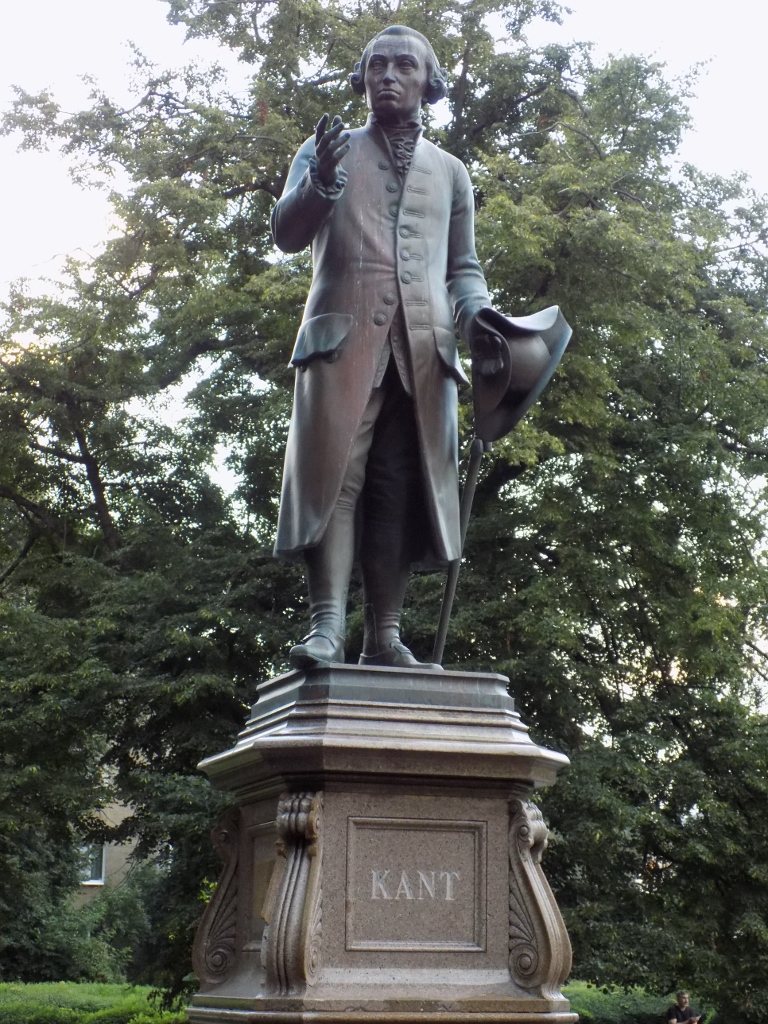 Monument in front of the Immanuel Kant Baltic Federal University
Monument in front of the Immanuel Kant Baltic Federal University
As he was famous and very much respected during his lifetime, Kant was originally buried within the cathedral, but then at the end of the 19th century his remains were moved to the mausoleum that was added onto a corner of the cathedral.
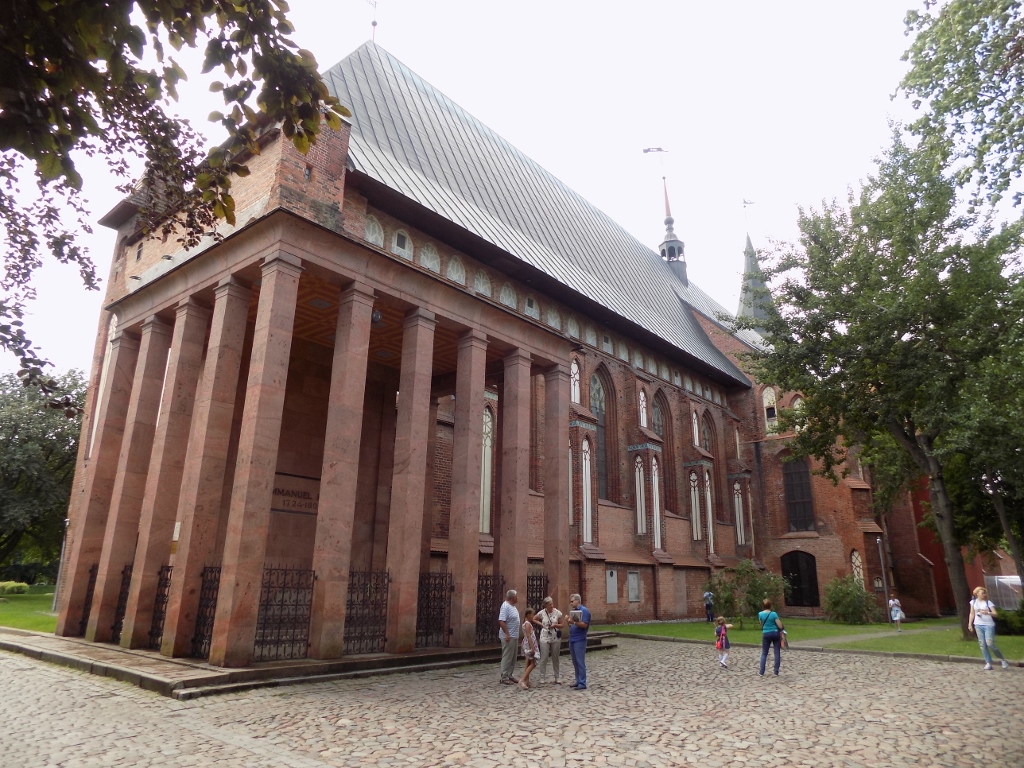 North-east corner of the Konigsberg Cathedral with Kant’s mausoleum
North-east corner of the Konigsberg Cathedral with Kant’s mausoleum
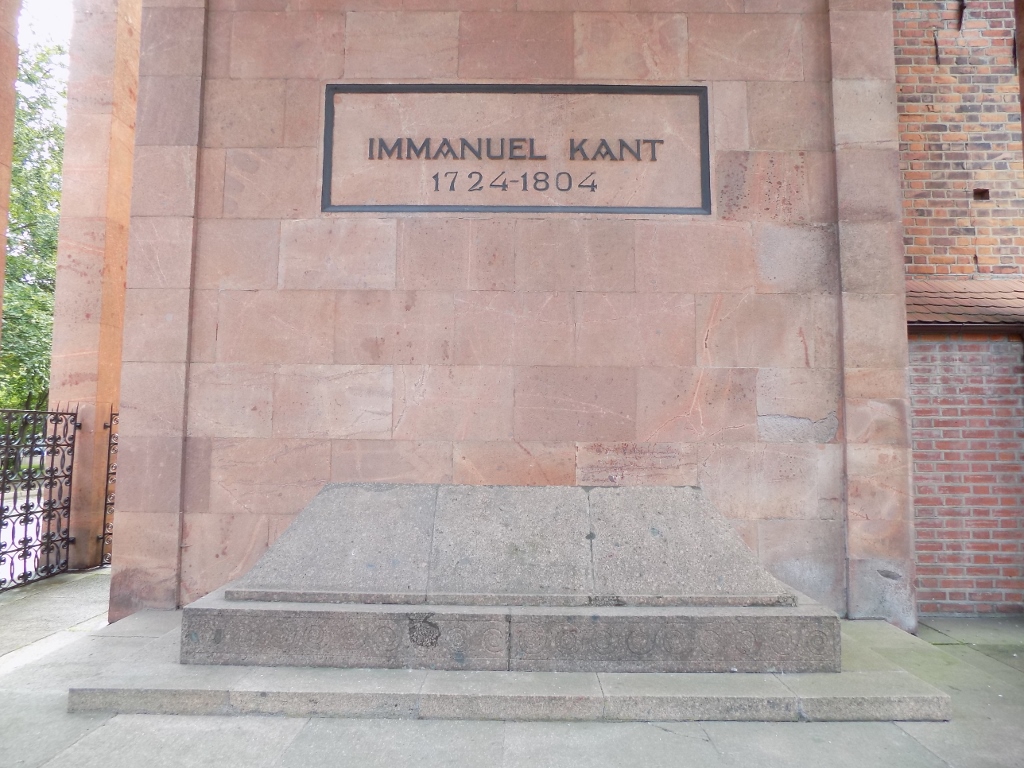 Kant’s grave in the added section of the Konigsberg Cathedral
Kant’s grave in the added section of the Konigsberg Cathedral
The cathedral itself is nowadays used as a museum and a place for concerts, although there are also a couple of religious chapels, as well. I was very, very lucky when the lady I was sitting next to on my way from Gdansk told me there was a concert that day, so I went there and truly enjoyed it. Have a listen...
When the concert was over, from the island on which the cathedral and the surrounding park are located, I crossed a bridge to the neighbouring Fishermen's Village, where I finally had a break and had something to eat. The Fishermen’s Village actually comprises a few buildings, including a lighthouse, made over time on the riverbank.
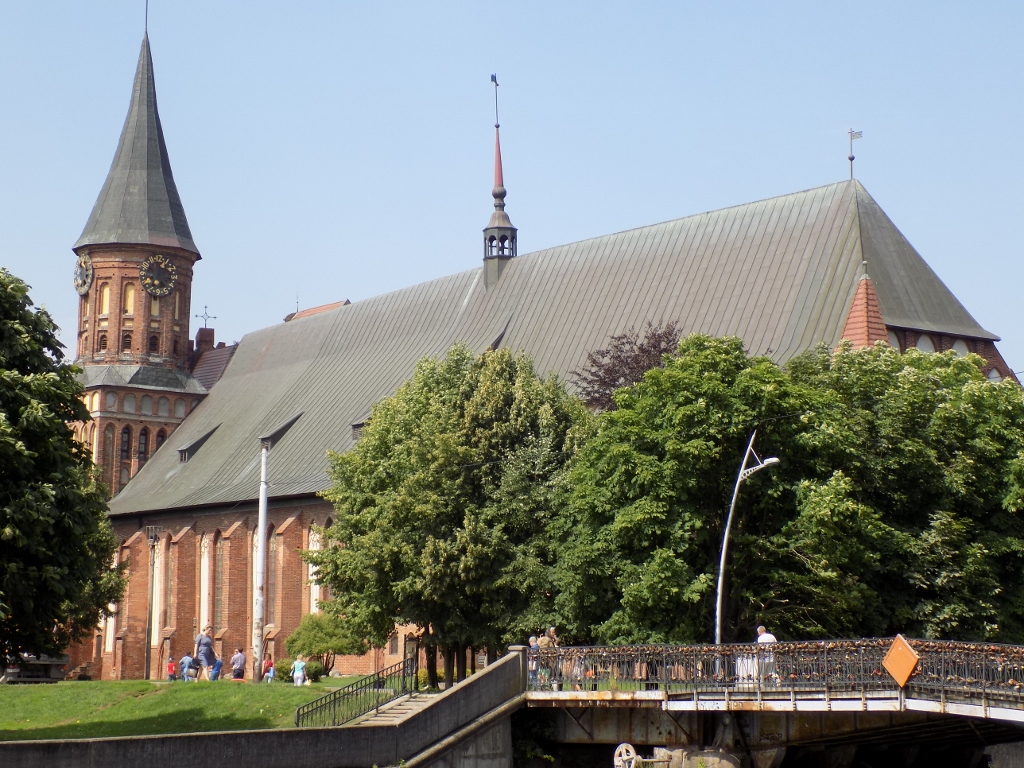 Konigsberg Cathedral
Konigsberg Cathedral
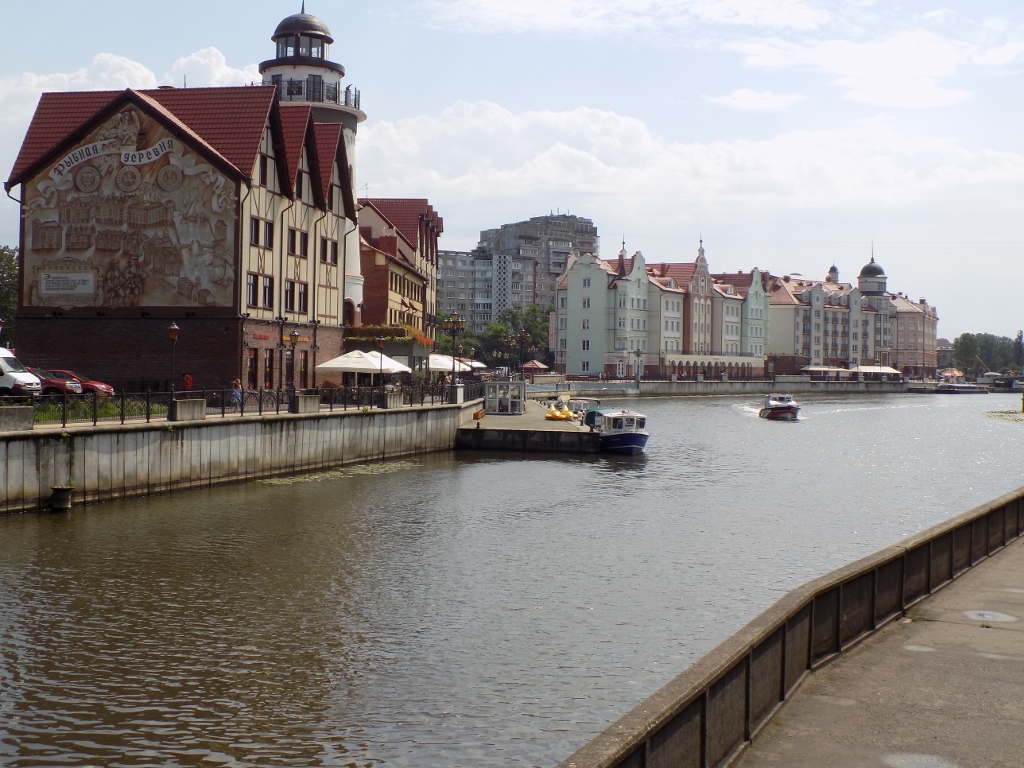 Fishermen's Village
Fishermen's Village
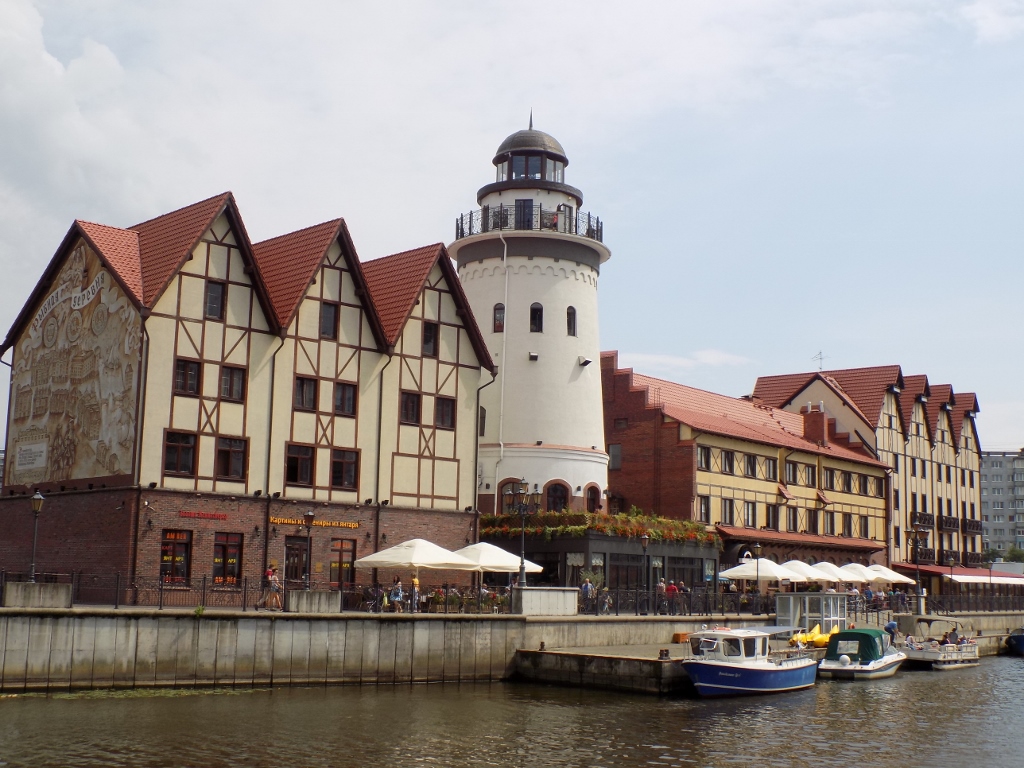 Fishermen's Village
Fishermen's Village
Generally speaking, Kaliningrad has a lot of constructions and renovations going on, not as much as I saw in Poland, but it can still be seen that they are trying to make the place nicer. I was here for too short a period of time, so I couldn’t visit all the museums I wanted, but this is certainly a place where one can stay for a while without getting bored.
After the break and rest, I went to the top of the lighthouse in the Fishermen's Village in order to look around.
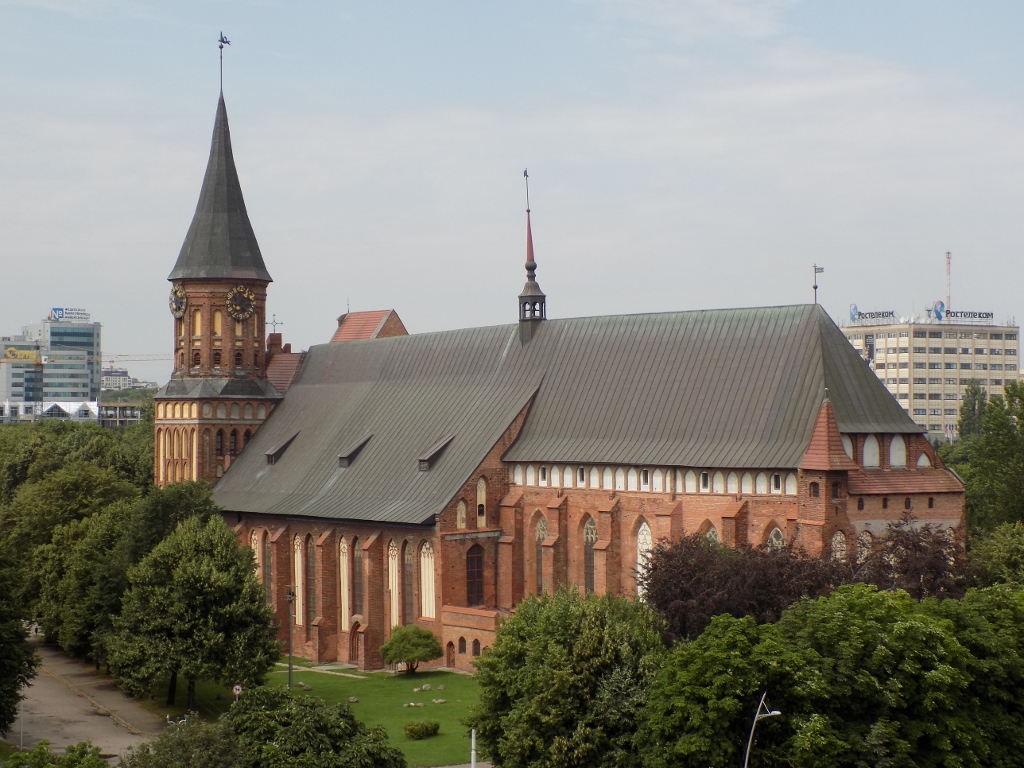 Konigsberg Cathedral
Konigsberg Cathedral
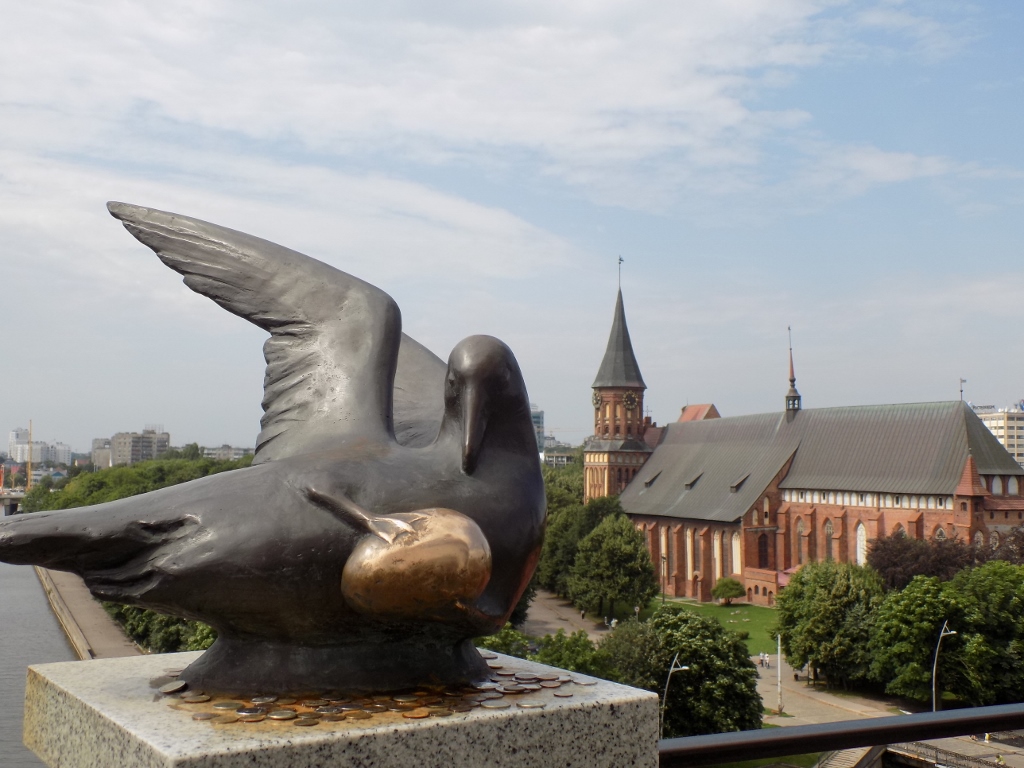 Seagull on top of the lighthouse and the Konigsberg Cathedral
Seagull on top of the lighthouse and the Konigsberg Cathedral
And then I went to the South Park and to the Friedland Gate Museum, thus named after the gate within which it is located and which used to be a part of the ramparts around the town. It is a small, but interesting museum. It mostly shows the way of life in Konigsberg before the war.
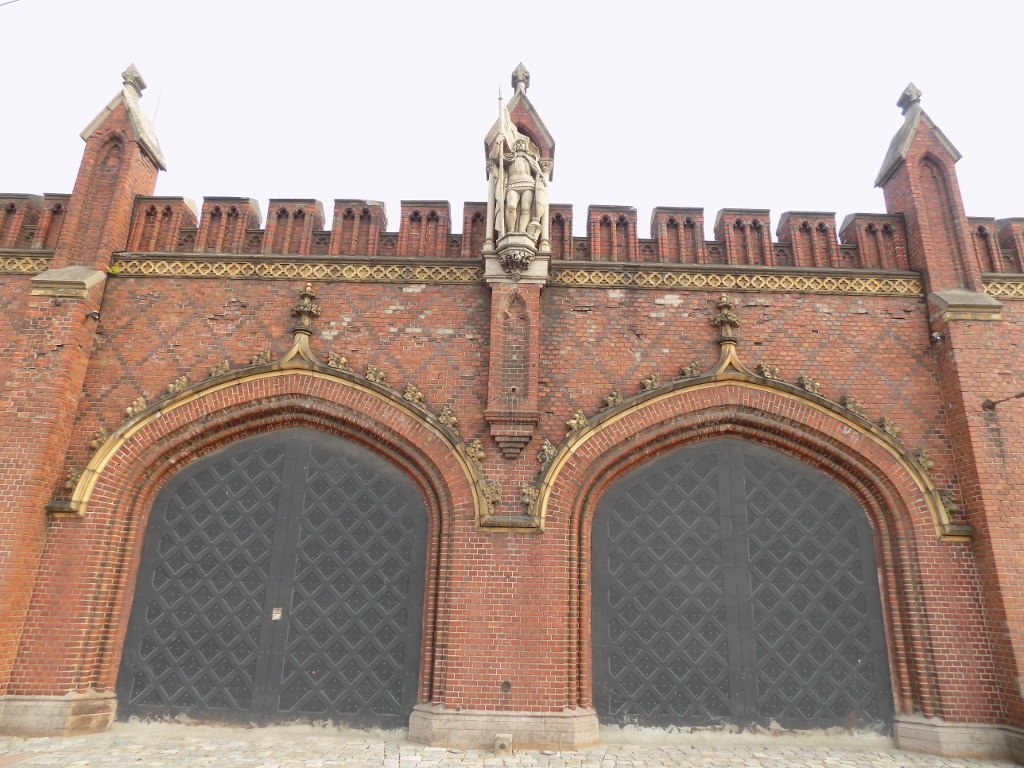 Wall of the Friedland Gate
Wall of the Friedland Gate
But, this entire story of my walk around Kaliningrad would not be complete if I didn’t mention that in several places I came across stands selling kvass. Kvass is a fermented beverage with low alcohol content and it is made primarily of rye, so it contains a lot of vitamins and good stuff. On the other hand, its taste does require certain getting used to, if you are not already familiar with it. I like kvass, so I gladly treated myself to a glass of it at one such place.
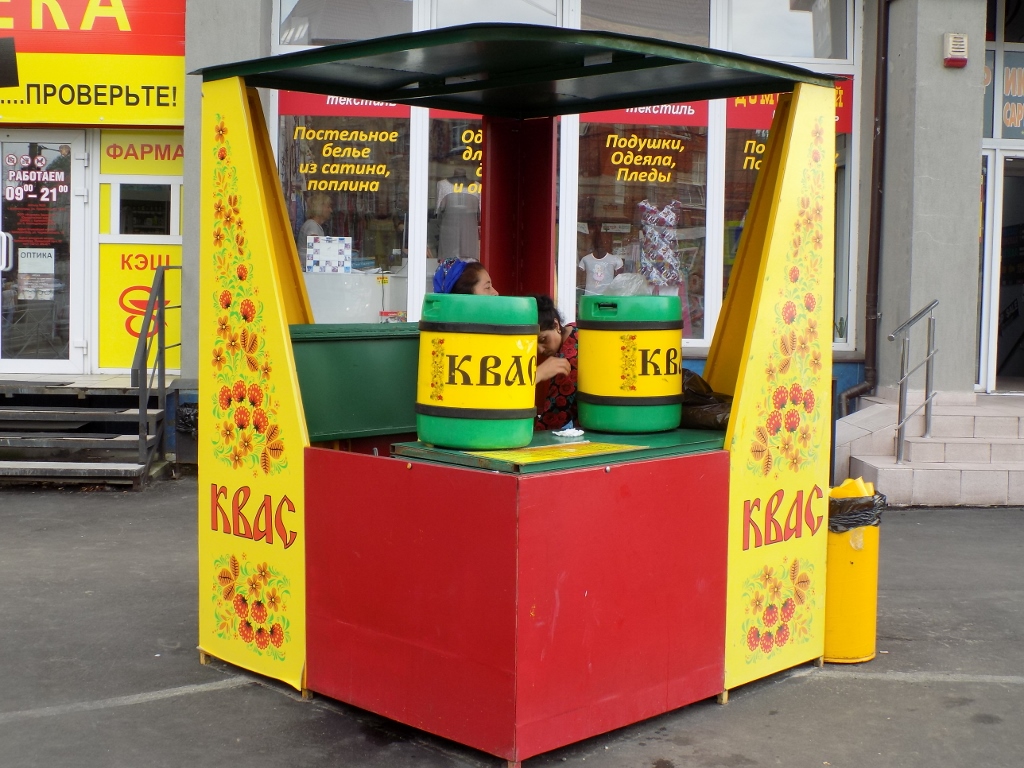 Street stand selling kvass
Street stand selling kvass
The next day I spent a couple of hours quite lazily. I leisurely walked around the neighbourhood, went for a coffee at the Fishermen's Village, made a circle around the Cathedral and waved goodbye to Kant.
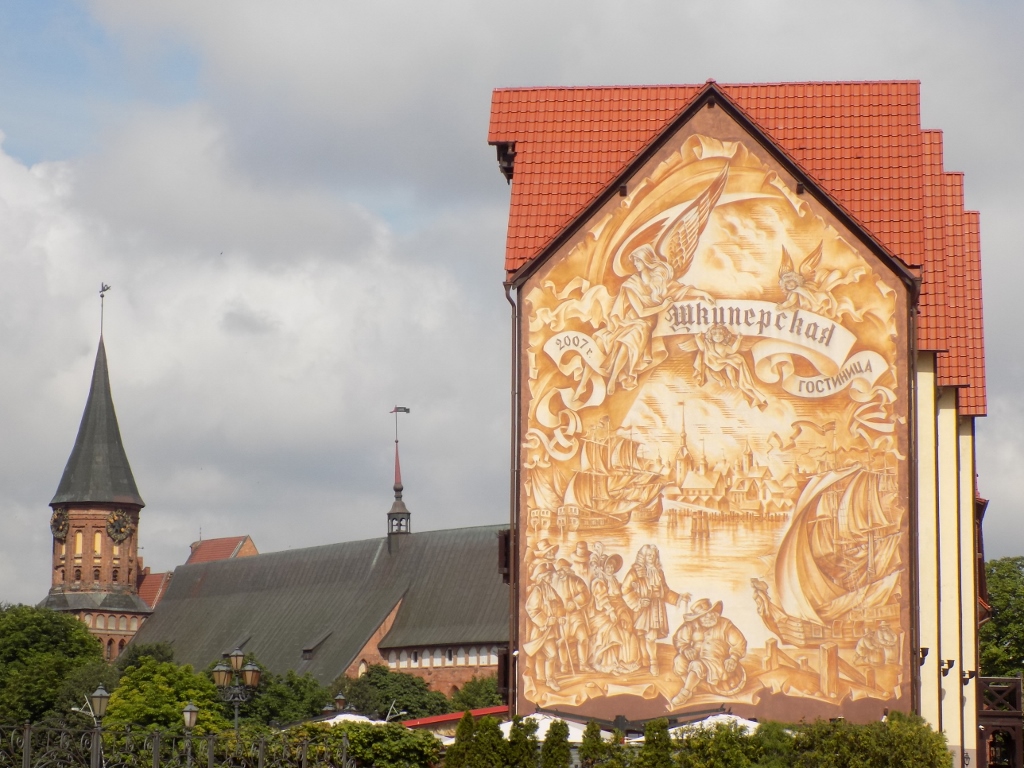 Konigsberg Cathedral and the Fishermen's Village
Konigsberg Cathedral and the Fishermen's Village
I also stopped at a shop to buy some water for my next journey and slowly walked to the coach terminal. On my way I passed by the House of Arts in front of which there was Lenin still looking intently at the glorious future. And soon after that I left Russia and returned to Poland.
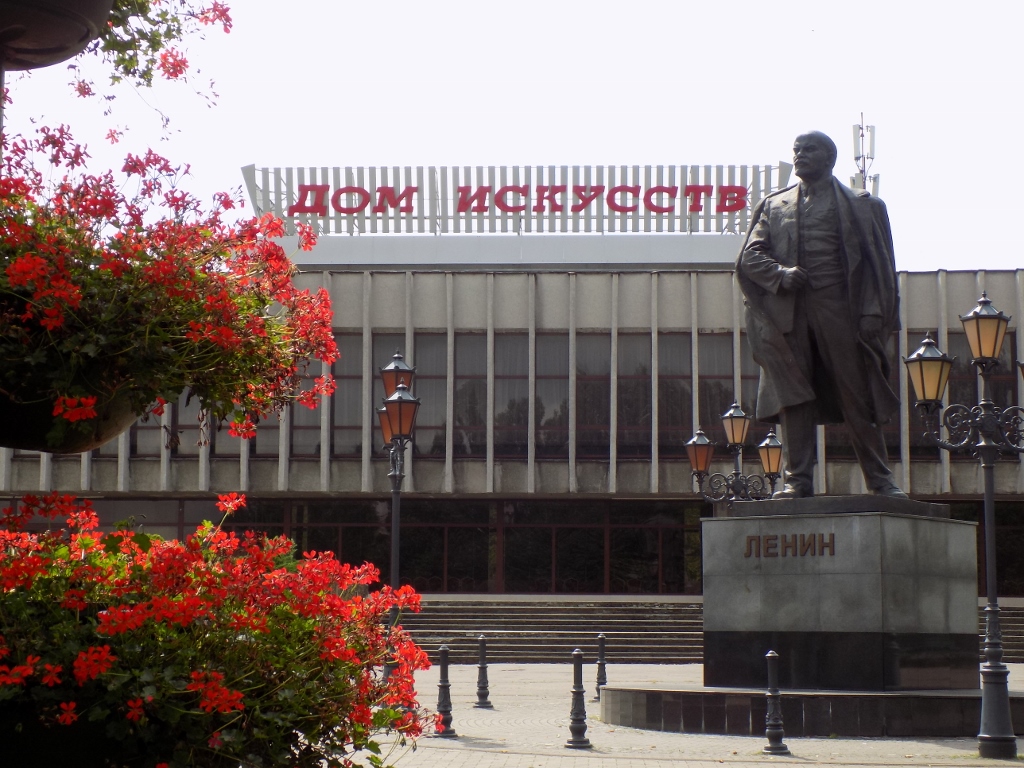 House of Arts in Kaliningrad
House of Arts in Kaliningrad
Every time I watch and listen to the “West” side, I am a witness to great and strong prejudice of Russia and Russians. Everything is observed in a special way, but from the very start and always with a lot of criticism. Whatever the Russians do, there is always an inevitable heavy sigh and: “Ah, those Russians!” Let me give an example. In my English-language guide to Paris, in the section dealing with Montmartre, there is a special mention saying that Cossacks, as a part of the Russian army that came to Paris in 1814, killed and nailed a miller from the Debray family to one of the wings of the family’s mill, thus suggesting a great savagery of Russians. In all of this, what is lost from sight is the fact that only a couple of years before through the race of his army across Russia and battles Napoleon came to Moscow and entered city! I suppose he did all of this with no civilian casualties or Russian millers who were killed during Napoleon’s campaign. On the other hand, the Russians came to Paris, they conquered it (together with Austria and Prussia), and then they went back home. I don’t know what would have happened if Napoleon had not lost in Russia in the end; whether he would just peacefully without any historic consequences return to Paris.
Another example are comments of the Americans I was in the same group with whom I mentioned in my text on Antarctica (see: https://www.svudapodji.com/en/chile-6/).
But, in order for me not to appear too romantic and partial about Russia, at one point I was completely shocked. Namely, all large crossroads in Kaliningrad have traffic lights that are accompanied by a sound for blind persons. When I was crossing the street near the Drama Theatre, I was standing and waiting for the traffic light to change from a standing red person to a walking green person. And then I heard the sound and automatically made a move, but in a split second I noticed the red person still standing and the cars still passing in front of me. There had obviously been a de-synchronization between the sound and the visual sign. Ah, those Russians!!!